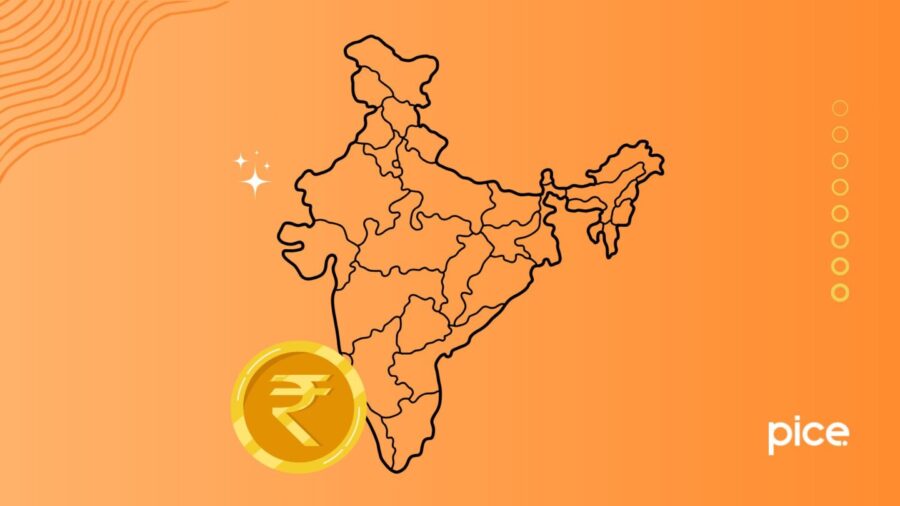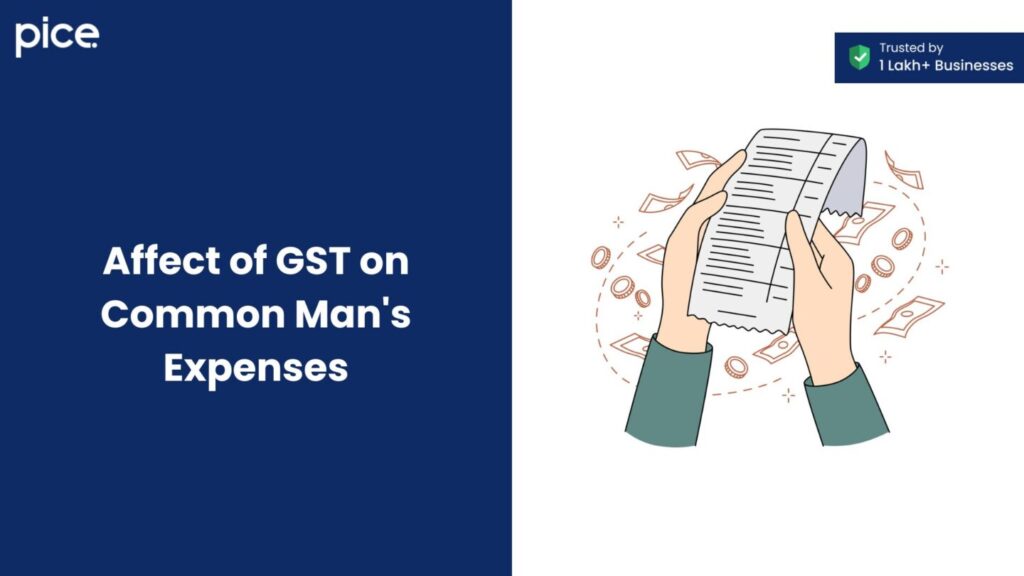Influence of GST on the Indian Economy
- 11 Sep 24
- 11 mins

Influence of GST on the Indian Economy
Key Takeaways
- GST has replaced multiple indirect taxes with a unified system, simplifying the tax structure and improving transparency.
- Various sectors, including e-commerce, telecom, logistics, and agriculture, have benefited from streamlined tax processes and cost savings.
- The Consumer Price Index (CPI) initially rose post-GST implementation, but long-term benefits include reduced prices for goods and services, boosting demand and economic activity.
- GST promotes economic growth by increasing tax revenue, reducing corruption, and enhancing the ease of doing business.
- While GST has increased compliance burdens for some businesses, its overall impact has been positive, driving efficiency and reducing tax evasion.
The Goods and Services Tax (GST) introduced in 2017 has made a significant mark in the country's economic reforms. This indirect tax regime replaced a multitude of taxes levied by central and state governments, streamlining the tax regime and promoting a unified market.
However, like any major economic reform, the implementation of GST has brought both positive and negative impacts on the economy. This blog will study the tax structure, its influence on different sectors and the overall impact of GST on the Indian economy.
Understanding GST
Goods and services produced or sold within India are subject to a tax known as the Goods and Services Tax (GST). This tax is applied at every stage of production. Starting from the raw material stage until the final sale as the product reaches the consumer.
GST is essentially a destination-based tax i.e., collected where the product is ultimately used. For example, if the goods are manufactured in Haryana and sold in Delhi, the tax is levied in Delhi. Moreover, GST is also collected whenever value is added during the manufacturing process.
There are mainly 4 types of GST in India:
- CGST (Central Goods and Services Tax): It is imposed by the central government on intra-state sales. If goods are sold within the same state, the CGST is collected by the central government.
- SGST (State Goods and Services Tax): This tax is collected by the state government on sales of goods and services within the state. The state government uses this revenue for its expenses.
- IGST (Integrated Goods and Services Tax): This is applied to interstate sales and purchases. The revenue from IGST is shared between the central and state governments. This ascertains that both benefit from the tax collected on interstate trade.
💡If you want to pay your GST with Credit Card, then download Pice Business Payment App. Pice is the one stop app for all paying all your business expenses.
Effects of GST on Various Sectors
GST has significantly affected various sectors of the Indian economy, benefiting some while presenting challenges for others, as detailed below:
- Pharmaceutical and Healthcare: The GST network is a very clear example of successfully using the power and resilience of blockchains in building nationwide information infrastructure for Pharmaceutical and Healthcare industries. To use this industry to lower the cost of healthcare across all income levels, these industries were given a tax benefit by the government.
- E-commerce Sector: E-commerce is one of the growing sectors. The increasing competition and the uncertainty of cash flows that had come as a by-product of this tax system were ultimately resolved when GST was introduced — it lowered the overall burden attached to indirect taxes for all businesses through every single stage in a supply chain. However, online retailers need to be in charge of the tax that is collected at source which adds another layer.
- Telecom Sector: In terms of the telecom industry, there will be a decline in prices as storage and shipping costs among others are low. This is expected to reduce the cost of telecom services.
- Logistics: In a vast country like India, logistics play a critical role in the economy. Under the “Make in India” initiative, a well-organised logistics company has excellent growth prospects, thanks to GST’s efficiency in tax collection.
- Fast-Moving Consumer Goods (FMCG): FMCG products benefit from GST by reducing the need for multiple sales depots. This leads to significant savings in logistics and distribution costs for such companies.
- Farming and Agriculture: The agricultural sector remains most crucial to India’s economy. It contributes over 18% to the GDP and looks to gain from improved logistics under GST. Lower shipping costs for food and agricultural products result in a positive impact on wholesalers.
- SMEs and Start-ups: Ease of compliance through DIY, increased registration limits and credits on input taxes have breathed life into Indian small businesses The predominant advantage of this simplification is that, now e-commerce start-ups need not have to bother first about their tax liabilities.
- Car: GST has replaced an arduous system of excise, VAT, sales tax, road tax, motor vehicle tax and registration duty with some plain taxation. The decrease in tax rates is expected to bring down prices of vehicles and help create demand, thus propelling growth.
- Textiles Sector: The textile industry, which is the country's second-largest employer after agriculture and contributes to 10% of exports will be another beneficiary once customs duties are eliminated under GST. It is also expected to offer massive benefits for small textile businesses, especially those which depend on cotton.
- Freelancers: Freelancing is very common in developing countries, and under GST they are classified as service providers which makes it easier for them to file indirect taxes. They require clarity on the implications of GST on their business and how to keep compliant with it.
Overall, GST has brought about significant changes across various sectors. It has simplified tax structures and potentially lowered costs.
Positive Effects of GST on the Indian Economy
The implementation of GST has had several positive impacts on the Indian economy. These include:
- Single Tax Regime: GST replaces multiple taxes with one consolidated tax. In this way, the businesses can make payments easily and it further eases their tax compliance tasks by eliminating receipts maintenance both for business as well as government.
- Increased Efficiency: The cascading effect of indirect taxes is eliminated and the market has found a unified one which means more efficiency in the economy. As a result, businesses and consumers have lower costs.
- Economic Growth: GST has led to the growth in the economy as it is removing multiple layers of taxation which used to be levied earlier. The introduction of a simplified tax regime empowers businesses to invest more and make their operations larger.
- Increased Tax Revenue: GST has expanded the tax base to generate more revenue to facilitate payment of public services and construction. It has also made taxation easy with the input tax credit facility allowing certain taxpayers to save a sum of the tax to be paid to the central authorities.
Negative Effects of GST on the Indian Economy
While GST has had several positive effects, it has also faced some challenges and negative impacts. These include:
- Transition Costs: The transition to GST involved significant costs for consumers & businesses, including the need to upgrade their IT systems and adapt to new procedures.
- Compliance Burden: While GST has simplified the tax regime overall, it has also increased the tax compliance costs and burdens for some businesses, especially small and medium-sized enterprises.
- Impact on Prices: GST has caused price increases for some goods and services, but the overall effect on consumer prices has been relatively modest.
- Technical Challenges: The implementation of GST has been accompanied by some technical challenges, such as glitches in the GST portal and difficulties in filing returns.
GST’s Impact on the Consumer Price Index (CPI)
The Consumer Price Index (CPI) is an important metric that measures the fluctuations in the prices of consumer goods and services. The central government anticipated a CPI increase of around 3.24% during GST implementation. This prediction was based on the assumption that consumers would pay a unified market tax instead of multiple taxes. It would increase your purchasing power.
However, the actual CPI turned out to be 4.61%, indicating a rise of 1.37% compared to the initial estimate. While CPI does provide valuable insights, it is important to note that it's not the sole indicator of GST's effects on the economy. The increase in CPI could also be attributed to other factors that may have diminished the economy's purchasing power. Despite this, GST has significantly boosted government revenue through double taxation channels - both direct and indirect.
How Does GST Affect the Common Man's Expenses?

Customers initially paid more in taxes as a result of the implementation of GST in 2017. However, there are significant long-term benefits in the end. Lowering the tax burden on manufacturers of consumer goods, such as automakers and the FMCG sector, GST has indirectly lowered the prices of these commodities. More people can buy these products, thanks to their increased affordability. This has increased demand and energised production cycles.
In addition, the increase in output has led to increased job prospects and income levels. This improves the general welfare of the populace. The Goods and Services Tax (GST) has also been crucial in reducing the prevalence of corruption, protecting the monetary interests of common people and promoting a fairer and more open financial system.
It has made the economy more efficient and competitive by simplifying the tax system, boosting tax revenue, and allowing the government to fund infrastructure and public services.
Lastly, GST has decreased opportunities for tax evasion and corruption by promoting increased accountability and transparency in the tax system.
Overall Impact of GST on India's Economic Growth
Overall, implementing GST has been a good sign for the Indian economy. Indirect tax revenues in the country have a direct correlation with economic growth and hence, proponents of higher indirect taxes argue that an increase in revenue at these levels is seen as positive in terms of economy. The GST revenue increased by 1% which further caused a GDP boost of around 0.56%.
However, many economists also warn that a higher GST rate may have the exact opposite effect, reducing domestic and global trade which could decrease GDP growth. The assumption is that a more vigorous GST rate would lead to a 3.1% expansion of GDP instead of baseline growth at the level of 4.2%. The indirect taxes impact the YTC market level, causing climate investors to deteriorate and decreasing the amount of foreign investment.
The Bottom Line
The GST laws have been a major reform in India's economic history. While its implementation did face some challenges, the overall impact on the Indian economy has been indeed positive. GST has simplified the tax regime, increased efficiency and promoted economic growth. While there may be some short-term adjustments, the long-term benefits of GST are expected to be significant.
 By
By 

















